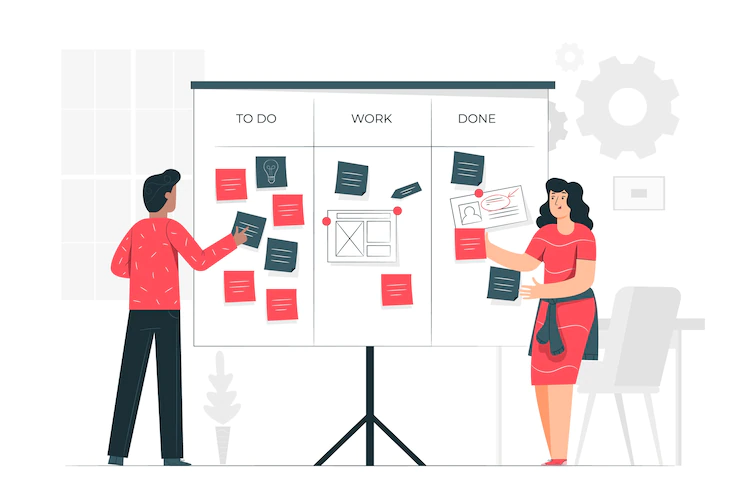Employee Scheduling: 3 Challenges and Solutions
4 Mins Read
Published on: 25 May 2022
Last Updated on: 09 November 2024

toc impalement
Technological developments coupled with new generations of workers (Millennials and Gen-Zers) changed the traditional work paradigm. Plus, the pandemic turned remote working from an option some employees had to a necessity.
According to Buffer’s 2022 State of Remote Work report, 93% of respondents liked remote work and were happy to recommend it. However, the survey found that this was only possible because the companies were positive about having hybrid teams on their hands.
Still, working with a hybrid team can create a series of challenges for business administration, and employee scheduling is right at the top. After all, it’s already difficult to manage employees when everyone should be present in the office!
But, everything is possible with the right solutions, which is why today we’ll discuss the top most common employee scheduling challenges and the solutions businesses use to overcome them.
3 Prime Challenges and Their Solutions to Modern Employee Scheduling
In Brief:
1: Juggling Multiple Types of Employees
2: Manually Processing Requests
3: Budget Management
#1: Juggling Multiple Types of Employees

As hybrid teams become mainstream, managers and businesses have to find ways to create schedules that work for everybody. Luckily, technology can help with this conundrum by creating apps and platforms that keep track of everyone’s availability and preferences.
Nowadays, the best employee scheduling app works with the employees and allows them to specify their availability throughout the day. As a result, the team manager will have an accurate view of everyone’s preferred time slots and will be able to put together a comprehensive schedule that works for everyone.
Also, if you’re working with on-site teams that have their schedule divided into shifts (as happens in restaurants or hotels), you can track employees’ activity while on duty to make sure everyone respects their engagements.
Aside from tracking employees’ activity, employee scheduling tools can help managers lead their teams better through more informed decision-making. Managers don’t need to rely on guesswork when assigning schedules to employees.
Employee scheduling software utilizes data analytics, providing managers with suggestions to improve their shift-assigning process. Some platforms can monitor trends, such as common schedule patterns and employee preferences. Such a feature can recommend changes in shift assignments. In addition, managers must remain alert to standards and regulations to create fair employee schedules.
#2: Manually Processing Requests

There are times when someone can’t come to work and asks for a day off. Also, vacations and other types of time off are requests that have to be processed and introduced in the system so other departments (HR, Accounting, and so on) can keep track of employees’ availability as well.
When you have a small team, manually processing the requests may not seem like a big deal, but teams bigger than four people are already a lot of work.
That’s why employee scheduling platforms automate the entire process and make sure the request takes the shortest route from the one logging in the request to the person who has to approve it. Once approved, the request will automatically show up in the schedule and all the interested parties will receive a notification.
#3: Budget Management

Employee scheduling is also important for financial purposes, especially if your employees are paid by the hour. Plus, modern scheduling systems can connect with third-party apps and systems within the company for salary calculations, bonuses, and other budget-related decisions.
Also, when you have an accurate view of how much each employee worked, it’s easy to identify top performers, people who may not be a good fit for their position or people who may be overworked. It’s also a good way to know if you need to hire new people or cut current employees’ hours.
Even more, a scheduling system also gathers valuable data which can be used for future budget planning and estimations. Aside from a scheduling system, investing in a resource management system for improved budget management is wise, as most successful enterprises do.
Budget management involves careful planning, and many managers utilize Jira for this significant business chore. With Jira resource management, managers can plan and manage low-level project management, including separate and daily tasks, which can directly affect budgeting.
But Jira needs further enhancements to effectively plan, schedule, and allocate people, money, and technology to a project. This tool is only intended for project and task management, wherein project managers can create a project and divide the project into subsequent tasks for team members. It’s good that resource management plugins for Jira are available, allowing enterprises to power up their business processes and attain their overall goals.
Wrap Up
Accurate employee scheduling is a way to cut business costs as it provides you with a realistic view of your team’s efforts. Also, it helps avoid internal conflicts related to unfair scheduling, which tend to show up when people work the day and night shifts.
As a manager, when you have the whole picture in front of you, planning becomes easier and makes a lot more sense. Plus, automation is a fantastic tool when managing various types of employees and schedules since it eliminates human error.
Additional Resource:
How Businesses Can Support Employees Experiencing Menopause
How To Choose The Best Company Gift For Your Employees
Employee Training Videos: Practical Guidelines And Tips
5 Ways to Make Employees Feel Truly Appreciated


















Comments Are Closed For This Article